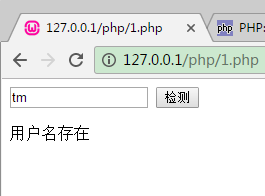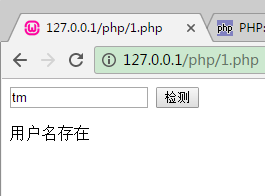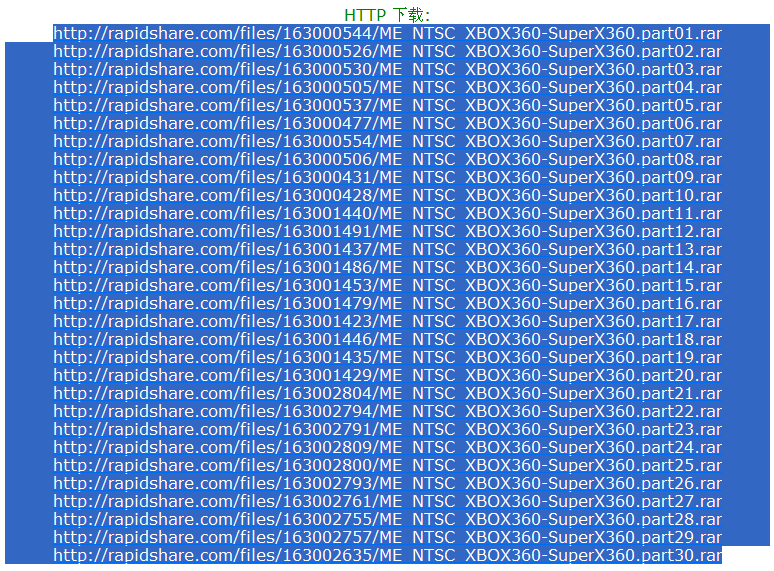 Backend Development
Backend Development
 PHP Tutorial
PHP Tutorial
 Summary of the definition and usage of crypt() function in php
Summary of the definition and usage of crypt() function in php
Summary of the definition and usage of crypt() function in php
In php functions, there are many encryption functions, one of which can implement data encryption function is called crypt() function. The crypt() function uses a one-way algorithm and has no corresponding decryption function. It returns a string encrypted using DES, Blowfish, or MD5 algorithms. On the surface, the crypt() function seems to be of little use, but this function is indeed widely used to ensure the integrity of system passwords. Because even if the one-way encrypted password falls into the hands of a third party, it will not be of much use since it cannot be restored to plain text. Below we will make some summary of the use of crypt() function, hoping to be helpful to everyone's PHP learning. crypt() function related content 1. PHP encryption function - crypt() function encryption usage example Before introducing the encryption function, let us first introduce the principle of data encryption: it is to process the original plain file or data according to a certain algorithm, so that It becomes an unreadable piece of code, usually called "ciphertext". In this way, the purpose of protecting data from illegal theft and reading is achieved! The main functions that can encrypt data in PHP
1. Summary of usage examples of crypt() function in PHP

Introduction: There are many encryption functions in PHP functions, one of which can implement data encryption function is called crypt() function. The crypt() function uses a one-way algorithm and has no corresponding decryption function. It returns a string encrypted using DES, Blowfish, or MD5 algorithms. On the surface, the crypt() function seems to be of little use, but this function is indeed widely used to ensure the integrity of system passwords. Because even if the one-way encrypted password falls into the hands of a third party, it will not be of much use since it cannot be restored to plain text. Below I...
2. Summary of encryption usage of php function crypt()

Introduction: There are many encryption functions in php functions, one of which can implement data encryption function is called crypt() function. The crypt() function uses a one-way algorithm and has no corresponding decryption function. It returns a string encrypted using DES, Blowfish, or MD5 algorithms. From
3. PHP encryption function—crypt() function encryption usage example

Introduction: Before introducing the encryption function, let us first introduce the principle of data encryption: it is to process the original plain file or data according to a certain algorithm to make it an unreadable piece of code. It is usually called "ciphertext". Through this method, the purpose of protecting data from illegal theft and reading is achieved!
4. Use crypt() function for encryption-php encryption technology

Introduction: The crypt() function uses the salt parameter to encrypt the plain text. When judging, the output information is encrypted again using the same salt parameter, and the judgment is made by comparing the results of the two encryptions.
5. Two classic PHP encryption and decryption functions are shared

##Introduction: This article mainly introduces the sharing of two more classic PHP encryption and decryption functions, one is Discuz!'s authcode encryption function (with detailed decomposition), and the other is the encrypt() function, both of which are relatively classic. , Friends in need can refer to
6. php openssl openssl_private_encrypt Question
##Introduction: Question: When picking up JD.com When using the payment interface, the local program written in dome can be used, but when running online, the openssl_private_encrypt() function cannot continue to run, no error is reported, and no data is returned. As shown in the picture: The local one is php5.6, opens openssl, Windows 7 server...7. PHP encryption and decryption function example tutorial_PHP tutorial Introduction: PHP encryption and decryption function example tutorial. Sharing of PHP encryption and decryption functions, one is Discuz!'s authcode encryption function (with detailed breakdown), and the other is the encrypt() function. You need to use PHP to encrypt specific information, that is, by adding 8. PHP encryption and decryption string summary_PHP tutorial Introduction: Summary of PHP encryption and decryption strings. Summary of PHP encryption and decryption strings. Sharing of PHP encryption and decryption functions. One is Discuz!'s authcode encryption function (with detailed decomposition), and the other is the encrypt() function. You need to use PHP to process specific information [Related Q&A recommendations]:
The above is the detailed content of Summary of the definition and usage of crypt() function in php. For more information, please follow other related articles on the PHP Chinese website!

Hot AI Tools

Undresser.AI Undress
AI-powered app for creating realistic nude photos

AI Clothes Remover
Online AI tool for removing clothes from photos.

Undress AI Tool
Undress images for free

Clothoff.io
AI clothes remover

Video Face Swap
Swap faces in any video effortlessly with our completely free AI face swap tool!

Hot Article

Hot Tools

Notepad++7.3.1
Easy-to-use and free code editor

SublimeText3 Chinese version
Chinese version, very easy to use

Zend Studio 13.0.1
Powerful PHP integrated development environment

Dreamweaver CS6
Visual web development tools

SublimeText3 Mac version
God-level code editing software (SublimeText3)

Hot Topics
 1664
1664
 14
14
 1423
1423
 52
52
 1317
1317
 25
25
 1268
1268
 29
29
 1246
1246
 24
24
 PHP and Python: Comparing Two Popular Programming Languages
Apr 14, 2025 am 12:13 AM
PHP and Python: Comparing Two Popular Programming Languages
Apr 14, 2025 am 12:13 AM
PHP and Python each have their own advantages, and choose according to project requirements. 1.PHP is suitable for web development, especially for rapid development and maintenance of websites. 2. Python is suitable for data science, machine learning and artificial intelligence, with concise syntax and suitable for beginners.
 PHP in Action: Real-World Examples and Applications
Apr 14, 2025 am 12:19 AM
PHP in Action: Real-World Examples and Applications
Apr 14, 2025 am 12:19 AM
PHP is widely used in e-commerce, content management systems and API development. 1) E-commerce: used for shopping cart function and payment processing. 2) Content management system: used for dynamic content generation and user management. 3) API development: used for RESTful API development and API security. Through performance optimization and best practices, the efficiency and maintainability of PHP applications are improved.
 Explain secure password hashing in PHP (e.g., password_hash, password_verify). Why not use MD5 or SHA1?
Apr 17, 2025 am 12:06 AM
Explain secure password hashing in PHP (e.g., password_hash, password_verify). Why not use MD5 or SHA1?
Apr 17, 2025 am 12:06 AM
In PHP, password_hash and password_verify functions should be used to implement secure password hashing, and MD5 or SHA1 should not be used. 1) password_hash generates a hash containing salt values to enhance security. 2) Password_verify verify password and ensure security by comparing hash values. 3) MD5 and SHA1 are vulnerable and lack salt values, and are not suitable for modern password security.
 How does PHP handle file uploads securely?
Apr 10, 2025 am 09:37 AM
How does PHP handle file uploads securely?
Apr 10, 2025 am 09:37 AM
PHP handles file uploads through the $\_FILES variable. The methods to ensure security include: 1. Check upload errors, 2. Verify file type and size, 3. Prevent file overwriting, 4. Move files to a permanent storage location.
 PHP: A Key Language for Web Development
Apr 13, 2025 am 12:08 AM
PHP: A Key Language for Web Development
Apr 13, 2025 am 12:08 AM
PHP is a scripting language widely used on the server side, especially suitable for web development. 1.PHP can embed HTML, process HTTP requests and responses, and supports a variety of databases. 2.PHP is used to generate dynamic web content, process form data, access databases, etc., with strong community support and open source resources. 3. PHP is an interpreted language, and the execution process includes lexical analysis, grammatical analysis, compilation and execution. 4.PHP can be combined with MySQL for advanced applications such as user registration systems. 5. When debugging PHP, you can use functions such as error_reporting() and var_dump(). 6. Optimize PHP code to use caching mechanisms, optimize database queries and use built-in functions. 7
 How does PHP type hinting work, including scalar types, return types, union types, and nullable types?
Apr 17, 2025 am 12:25 AM
How does PHP type hinting work, including scalar types, return types, union types, and nullable types?
Apr 17, 2025 am 12:25 AM
PHP type prompts to improve code quality and readability. 1) Scalar type tips: Since PHP7.0, basic data types are allowed to be specified in function parameters, such as int, float, etc. 2) Return type prompt: Ensure the consistency of the function return value type. 3) Union type prompt: Since PHP8.0, multiple types are allowed to be specified in function parameters or return values. 4) Nullable type prompt: Allows to include null values and handle functions that may return null values.
 The Enduring Relevance of PHP: Is It Still Alive?
Apr 14, 2025 am 12:12 AM
The Enduring Relevance of PHP: Is It Still Alive?
Apr 14, 2025 am 12:12 AM
PHP is still dynamic and still occupies an important position in the field of modern programming. 1) PHP's simplicity and powerful community support make it widely used in web development; 2) Its flexibility and stability make it outstanding in handling web forms, database operations and file processing; 3) PHP is constantly evolving and optimizing, suitable for beginners and experienced developers.
 PHP vs. Python: Understanding the Differences
Apr 11, 2025 am 12:15 AM
PHP vs. Python: Understanding the Differences
Apr 11, 2025 am 12:15 AM
PHP and Python each have their own advantages, and the choice should be based on project requirements. 1.PHP is suitable for web development, with simple syntax and high execution efficiency. 2. Python is suitable for data science and machine learning, with concise syntax and rich libraries.



